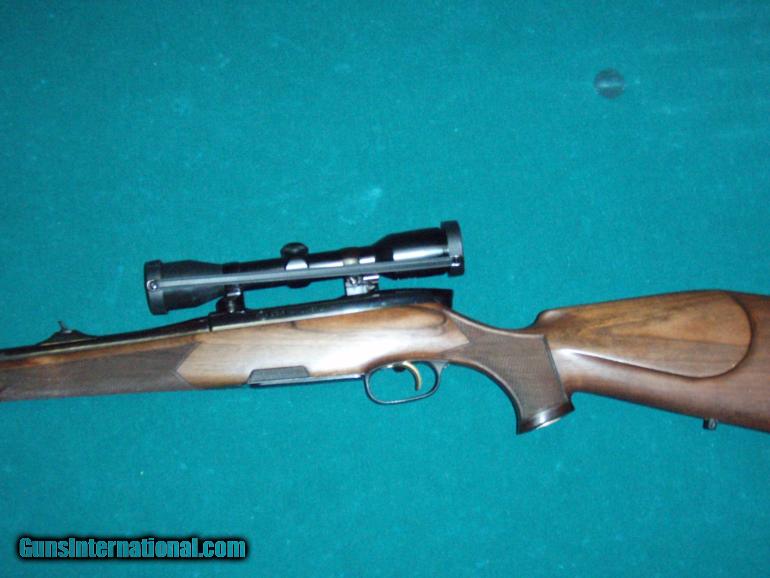

The Lux grades took a steel double stack magazine, because engraving was offered in the higher grades.

It is made to mount quickly, for iron sights or scope.

It is a true hunting rifle made for Africa, and has more pitch than many stocks today which are set up just for methodical shooting with a scope. The recoil pad is pretty stiff, just as the SBS is, but it is made by Pachmayr and you can swap out for several softer ones.

Other metric and English screws are close, so there is the danger of forcing one in and stripping the receiver, but it is so hard that you are more likely to jam or break off the screw. The screw spacing is standard, but it takes a different metric screw, so order Leupold or Warne bases for the rifle in order to get the right screws with them. It was offered with factory turn off QD mounts. This stock is derived from the SSG-69, and was one of the first molded plastic rifle stocks. You can see those in the frame underneath a car bumper. It can be finished very smoothly, or in the most rigid form, has surface marks from how it flowed in the mold and cured. It is very strong, being a form of ABS, which is used for automobile bumpers. The stock is made of Cycolac, a very stable and rigid plastic used for things like bricklayers and carpenter's levels. There was another wood stock in all grades with the Bavarian style buttstock. The stock design is an exact copy of the wood stock of the 1970s for the Steyr M Lux made for the American and English market. It was offered with single trigger or with double set triggers. The later versions came in black and green. The first version, in the early 1970s, had a brown stock. The last version, just before being supplanted by the SBS 96, came with or without iron sights. That is a Steyr M Professional, which mostly came in. I have one like it but with double set triggers.


 0 kommentar(er)
0 kommentar(er)
